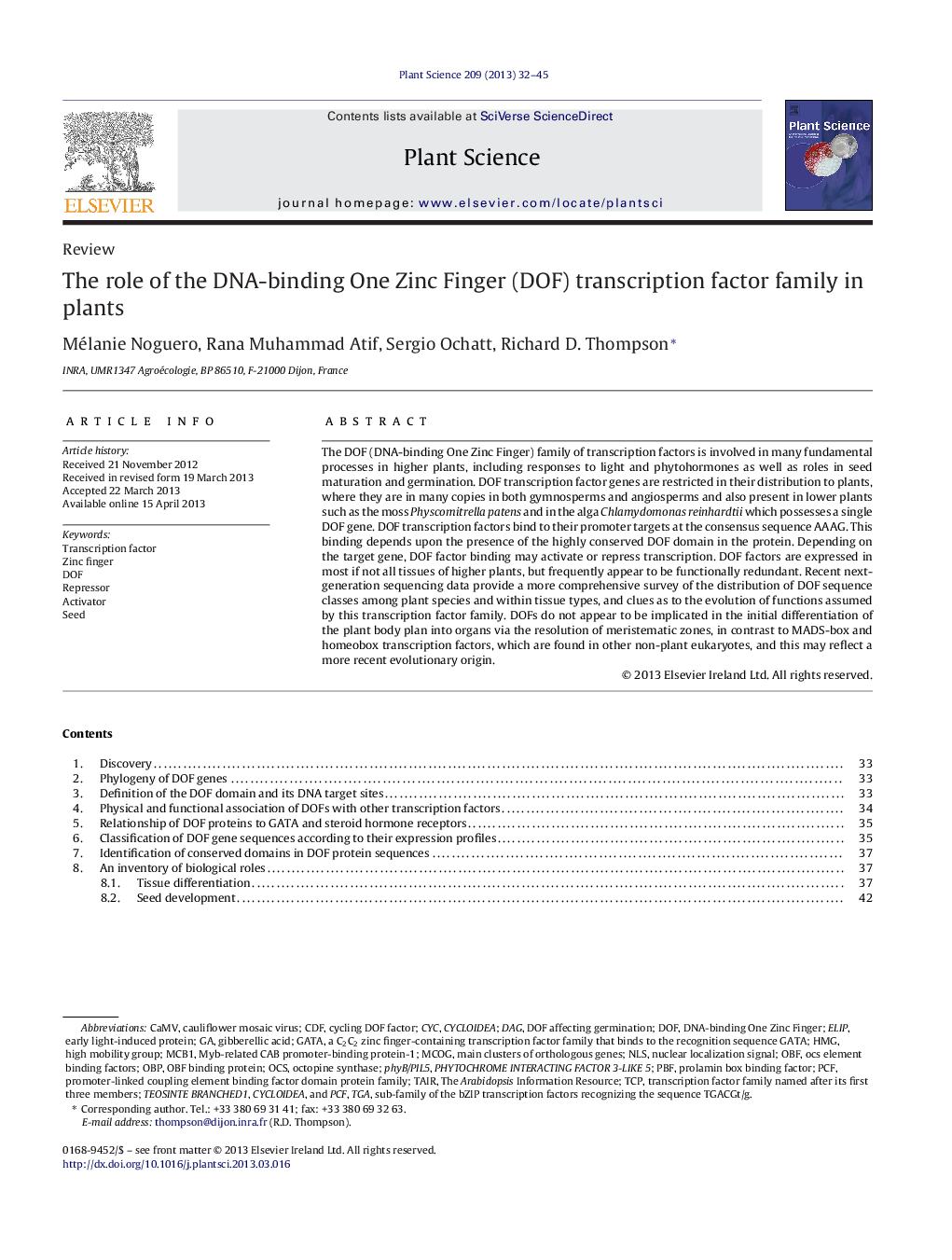| کد مقاله | کد نشریه | سال انتشار | مقاله انگلیسی | نسخه تمام متن |
|---|---|---|---|---|
| 8358652 | 1542076 | 2013 | 14 صفحه PDF | دانلود رایگان |
عنوان انگلیسی مقاله ISI
The role of the DNA-binding One Zinc Finger (DOF) transcription factor family in plants
دانلود مقاله + سفارش ترجمه
دانلود مقاله ISI انگلیسی
رایگان برای ایرانیان
کلمات کلیدی
DoFHmgCYCLOIDEAOBPPBFCYCELIPPCFNLSThe Arabidopsis Information ResourceOCsOBFCaMVCDFGATA - آمادهgibberellic acid - جیبرلیک اسیدDAG - روزTair - سهnuclear localization signal - سیگنال محلی سازی هسته ایTCP - قرارداد هدایت انتقالcauliflower mosaic virus - ویروس موزائیک گل کلمhigh mobility group - گروه تحرک بالا
موضوعات مرتبط
علوم زیستی و بیوفناوری
علوم کشاورزی و بیولوژیک
دانش گیاه شناسی
پیش نمایش صفحه اول مقاله

چکیده انگلیسی
The DOF (DNA-binding One Zinc Finger) family of transcription factors is involved in many fundamental processes in higher plants, including responses to light and phytohormones as well as roles in seed maturation and germination. DOF transcription factor genes are restricted in their distribution to plants, where they are in many copies in both gymnosperms and angiosperms and also present in lower plants such as the moss Physcomitrella patens and in the alga Chlamydomonas reinhardtii which possesses a single DOF gene. DOF transcription factors bind to their promoter targets at the consensus sequence AAAG. This binding depends upon the presence of the highly conserved DOF domain in the protein. Depending on the target gene, DOF factor binding may activate or repress transcription. DOF factors are expressed in most if not all tissues of higher plants, but frequently appear to be functionally redundant. Recent next-generation sequencing data provide a more comprehensive survey of the distribution of DOF sequence classes among plant species and within tissue types, and clues as to the evolution of functions assumed by this transcription factor family. DOFs do not appear to be implicated in the initial differentiation of the plant body plan into organs via the resolution of meristematic zones, in contrast to MADS-box and homeobox transcription factors, which are found in other non-plant eukaryotes, and this may reflect a more recent evolutionary origin.
ناشر
Database: Elsevier - ScienceDirect (ساینس دایرکت)
Journal: Plant Science - Volume 209, August 2013, Pages 32-45
Journal: Plant Science - Volume 209, August 2013, Pages 32-45
نویسندگان
Mélanie Noguero, Rana Muhammad Atif, Sergio Ochatt, Richard D. Thompson,